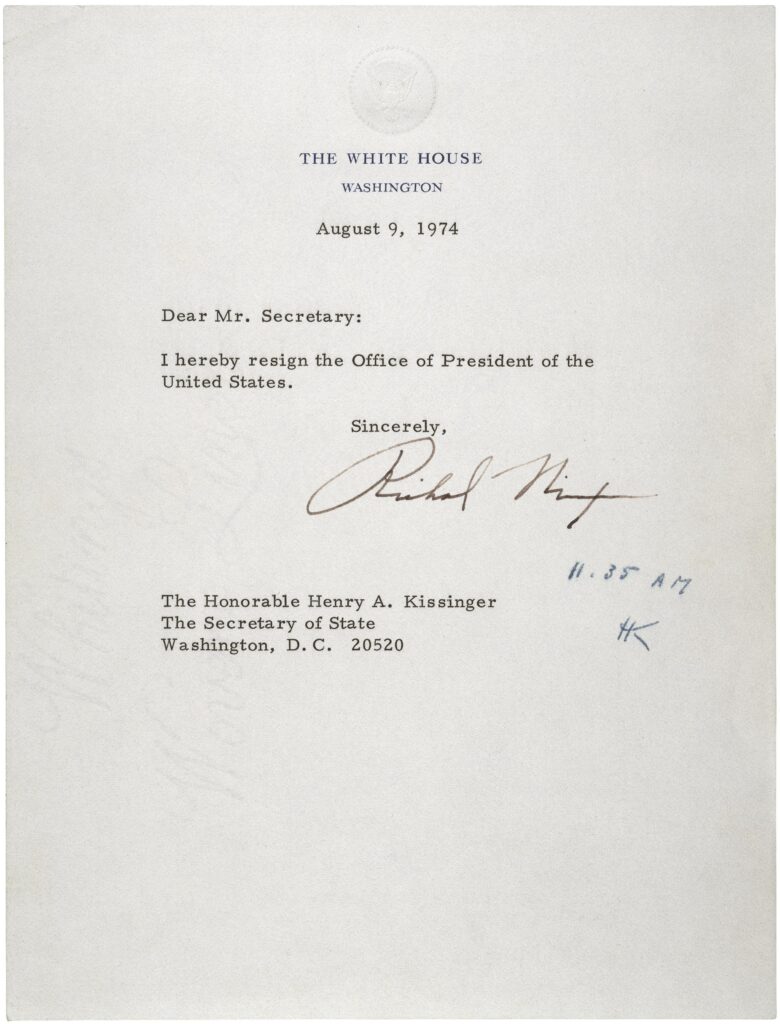President Nixon Corruption Scandal of 1972

The corruption scandal surrounding the Nixon administration, commonly referred to as the Watergate scandal, encompassed a series of illegal activities, abuses of power, and cover-ups. The scandal led to President Nixon’s resignation in 1974, the first by a U.S. president.
The Nixon administration solicited and accepted illegal contributions to fund covert operations, including the Watergate break-in. The Committee to Re-Elect the President collected laundered money from industry and corporate donors and wealthy individuals, ignoring campaign finance laws. Slush funds were used to finance activities such as espionage and sabotage against political opponents, referred to as “enemies.” For example, false press releases, forged documents, and other tactics were employed to disrupt opponent campaigns. Operatives orchestrated illegal break-ins, theft of confidential documents, and surveillance of opponents’ headquarters.
Nixon used federal agencies to target perceived enemies, including political opponents, journalists, and activists. The IRS audited individuals and groups deemed hostile to Nixon’s administration. The FBI conducted surveillance and intelligence-gathering on Nixon’s political enemies. The CIA was improperly involved in domestic matters, including the Watergate cover-up. Nixon’s staff compiled an “Enemies List” of individuals and organizations critical of the administration. Those on the list were subjected to harassment, including audits, investigations, and other forms of intimidation.
On June 17, 1972, five men connected to the Committee to Re-Elect the President (CREEP) were arrested for breaking into the Democratic National Committee headquarters at the Watergate complex in Washington, D.C. The burglars intended to wiretap phones and steal documents to gain an advantage in the 1972 presidential campaign.
Nixon and his administration attempted to cover up their involvement in the Watergate break-in. White House officials, including Attorney General John Mitchell, John Ehrlichman, and H.R. Haldeman, devised plans to obstruct investigations, who were later charged with crimes such as perjury, obstruction of justice, and conspiracy. Many were convicted and served prison sentences.
Nixon’s administration interfered with the Watergate investigation by firing individuals involved in investigating the case, such as during the Saturday Night Massacre (October 20, 1973), when Nixon ordered the firing of Special Prosecutor Archibald Cox, encouraged witnesses to provide false testimony, and destroyed evidence related to the scandal.
The FBI, CIA, and Justice Department were pressured to halt or manipulate the investigation. Large sums of money were paid to the Watergate burglars as “hush money” to buy their silence.
Nixon secretly recorded conversations in the Oval Office, capturing discussions about the Watergate break-in and subsequent cover-up. The tapes revealed Nixon’s involvement in efforts to obstruct justice, including the infamous “smoking gun” tape from June 23, 1972, where Nixon and Haldeman discussed using the CIA to block the FBI investigation.
Nixon’s Vice President, Spiro Agnew, was implicated in a separate corruption scandal involving bribery, extortion, and tax evasion during his time as Maryland’s governor and vice president. Agnew resigned in October 1973 as part of a plea agreement.
The scandal exposed widespread corruption and abuse of power in Nixon’s administration, eroding public trust in government, and led to the FECA Amendments of 1974 designed to address campaign finance abuses and restore public confidence in the electoral and governmental systems.
